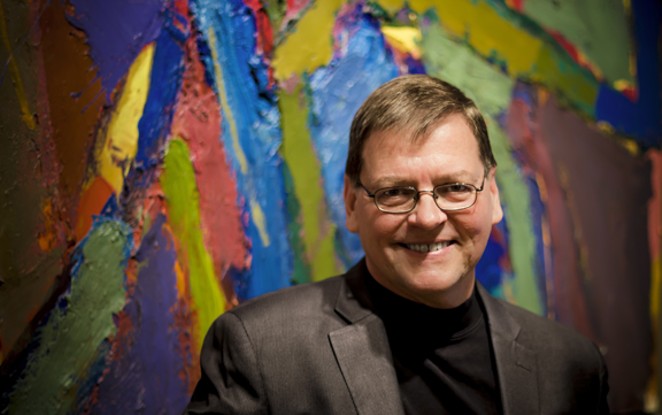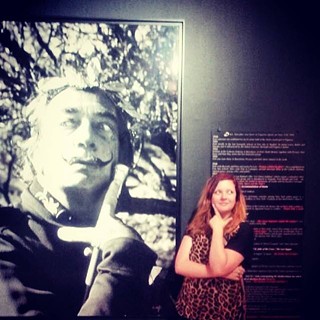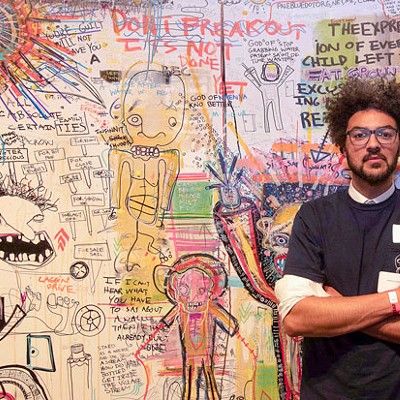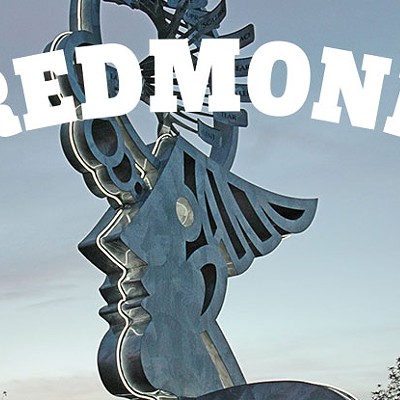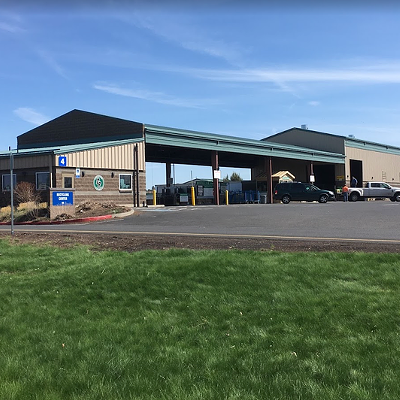[
{
"name": "Air - Ad - Rectangle - 2 pack - Inline Content - 1",
"insertPoint": "1/2",
"component": "16844684",
"requiredCountToDisplay": "6"
}
,{
"name": "Air - Ad - Rectangle - 2 pack - Inline Content - 2",
"insertPoint": "1/4",
"component": "16844686",
"requiredCountToDisplay": "20"
},{
"name": "Air - Ad - Rectangle - 2 pack - Inline Content - 3",
"insertPoint": "3/4",
"component": "16844687",
"requiredCountToDisplay": "17"
}
]
On Monday, Oct. 6, Bend will host the first Central Oregon Arts Summit, a product of the Oregon Arts Commission and the Arts and Culture Alliance's collaborations.
The summit is open to individual artists, arts supporters, arts-related businesses and volunteers, as well as staff and board members of nonprofit organizations. The keynote speaker, Doug Borwick is the author of the game changing academic guidebook, “Building Communities, Not Audiences: The Future of the Arts in the U.S.” Borwick was the President of the Board of the Association of Arts Administration Educators and for nearly 30 years was Director of the Arts Management and not-for profit management programs at Salem College in Winston-Salem, NC. He touts himself as “over-educated in the arts” with a Ph.D. in composition from the Eastman School of Music. His theories on the state of arts organizations nationally, come from his long experience in the field, and assert that arts began as an expression of community, but during a long historical progression the two have grown dynamically apart.
“It’s time to bring them back together,” said Borwick in an interview with the Source. “My fundamental thesis is that the arts establishment, basically the non-profit arts industry, has been, for a good deal of time separated from the person the street. It has to do with history, sociology and economic factors. As we look into the 21st Century, the model upon which that industry has been built is not a sustainable one. My role is two-fold. To advocate for closer connections between arts and communities in which they exist and also on the side of the art industry, to provide training and skills in how to do that.”
Below is more of our interview with Borwick that didn't make it into the print edition of the newspaper.
Source Weekly: “Tell me about Building Communities, Not Audiences: The Future of the Arts in the U.S.” and about how you came to write the book?
Doug Borwick: My fundamental thesis is that the arts establishment, basically with the non-profit arts industry, has been for a good deal of time, separated from the person the street. It has to do with history sociology and economic factors. As we look further into the 21st Century, the model upon which that industry has been built for a long time is not a sustainable one. My role is two-fold. To advocate for closer connections between arts and the communities in which they exist, and also on the side of the art industry, to provide training and skills in how to do that.
I’m a product of the arts establishment, and coming up no one talked to me about if this it was a good idea or how to do it. There are folks interested in this kind of work, but they don’t know where to begin.
SW: In your arts philosophy you say that, “Communities should not be seen as a collection of market segments to be tapped in an effort to sell tickets or extend reach; they should be seen as indispensable partners in improving lives.” Is this what you mean when you talk about arts making an authentic connection vs. an inauthentic one with the community?
DB: The way I describe it is community engagement—although, there’s some misconception about that in the arts community—it is a mission strategy rather than a marketing strategy. It’s the fundamental view of the arts organization as a contributor to the well-being of the life of the community.
Given the way the industry has evolved, there has been a tendency to think arts institutions are all about art and this has lead to a word I invented, artcentricity, meaning it’s about art and if someone from the community would like to take advantage, I’m for that, but what I’m about is Beethoven Sonatas or fill in the blank depending on the discipline. My work is getting people to understand or perhaps convince them there is no such thing as art for arts sake.
SW: How do DIY arts organizations and movements play into your theory as they seem to be directly connected with communities, borne from the heart of them?
DB: I’ve done work around arts entrepreneurship with individuals, and the more an artist can imagine him or herself as a participant in things that are important to the community, the more options there are for them. Rather than sitting alone, waiting for a sponsorship to shower them with money, they can create ne opportunities for themselves.
SW: Can you give bullet points of how a small arts community can mend gaps and work together to support each other’s organizations rather than competing for limited arts funding and support?
DB: In small and major cities, people think there’s a small pool of money for the arts and I’ve got to get my share. It becomes a circular firing squad. But the effect the potential for collaborative work in the arts is really quite significant, and I think one of the things that is a new thought sometimes, is that working with communities provides access to sources of funds that have never been available before.
For me, it begins with a mindset that I want to be of value to people, to even the person on the street, as opposed to abstract expert. In reaching people at the point where you have that passion, then we can talk about at what point do the depth of work that is important to me meet the needs and interests and values of people who may not have been there before. There are lots of ways to do that.
When we are thinking of community, that doesn’t mean we’re talking about American Idol all the time. It does mean not talking down to people who don’t have a background in the arts, and learning about them enough so the things I know and things I have been trained in can be applied in ways that really are meaningful for them. That really is the fundamental premise.
SW: Why do you see the the current model for arts funding as unsustainable?
DB: The big reasons have to do with economics and demographics. The arts are a labor intensive industry. There was a book written in late ‘60s, early ‘70s that said, “It will always take four musicians to play a string quartet.” As labor becomes more expensive as it will inevitably, art can’t improve productivity through technology like other industries. The arts industry is going to be more and more and more expensive as time goes by, and there is no way around that, at least not in mega trends terms.
In addition, while we do have increasing income inequality in this country, the amount of the change is not keeping pace with that increase money to sustain the industry. There’s a disconnect, wealthier people are not as avid supporters of the arts as the people in the mid-20th century.
That’s one side of the equation. The entire not-for-profit field is growing at an incredible pace, something like a 50 percent increase every 5-10 years. All those organizations are competing for funds, so traditional approaches to fundraising are becoming a problem.
[Traditionally in this country, high-art] has derived from European elite tradition of 18th and 19th centuries. When we arrive at a point where less than half the American population is form that cultural tradition, there’s not an automatic link to that art and so arts organizations need to be aware of and respond to that change.
Hear Doug Borwick speak at the Central Oregon Arts Summit
Monday, October 6
8:30 a.m. to 4 p.m.
Riverhouse Convention Center, 3075 Hwy 97.
$50 (fee includes box lunch).
The summit is open to individual artists, arts supporters, arts-related businesses and volunteers, as well as staff and board members of nonprofit organizations. The keynote speaker, Doug Borwick is the author of the game changing academic guidebook, “Building Communities, Not Audiences: The Future of the Arts in the U.S.” Borwick was the President of the Board of the Association of Arts Administration Educators and for nearly 30 years was Director of the Arts Management and not-for profit management programs at Salem College in Winston-Salem, NC. He touts himself as “over-educated in the arts” with a Ph.D. in composition from the Eastman School of Music. His theories on the state of arts organizations nationally, come from his long experience in the field, and assert that arts began as an expression of community, but during a long historical progression the two have grown dynamically apart.
“It’s time to bring them back together,” said Borwick in an interview with the Source. “My fundamental thesis is that the arts establishment, basically the non-profit arts industry, has been, for a good deal of time separated from the person the street. It has to do with history, sociology and economic factors. As we look into the 21st Century, the model upon which that industry has been built is not a sustainable one. My role is two-fold. To advocate for closer connections between arts and communities in which they exist and also on the side of the art industry, to provide training and skills in how to do that.”
Below is more of our interview with Borwick that didn't make it into the print edition of the newspaper.
Source Weekly: “Tell me about Building Communities, Not Audiences: The Future of the Arts in the U.S.” and about how you came to write the book?
Doug Borwick: My fundamental thesis is that the arts establishment, basically with the non-profit arts industry, has been for a good deal of time, separated from the person the street. It has to do with history sociology and economic factors. As we look further into the 21st Century, the model upon which that industry has been built for a long time is not a sustainable one. My role is two-fold. To advocate for closer connections between arts and the communities in which they exist, and also on the side of the art industry, to provide training and skills in how to do that.
I’m a product of the arts establishment, and coming up no one talked to me about if this it was a good idea or how to do it. There are folks interested in this kind of work, but they don’t know where to begin.
SW: In your arts philosophy you say that, “Communities should not be seen as a collection of market segments to be tapped in an effort to sell tickets or extend reach; they should be seen as indispensable partners in improving lives.” Is this what you mean when you talk about arts making an authentic connection vs. an inauthentic one with the community?
DB: The way I describe it is community engagement—although, there’s some misconception about that in the arts community—it is a mission strategy rather than a marketing strategy. It’s the fundamental view of the arts organization as a contributor to the well-being of the life of the community.
Given the way the industry has evolved, there has been a tendency to think arts institutions are all about art and this has lead to a word I invented, artcentricity, meaning it’s about art and if someone from the community would like to take advantage, I’m for that, but what I’m about is Beethoven Sonatas or fill in the blank depending on the discipline. My work is getting people to understand or perhaps convince them there is no such thing as art for arts sake.
SW: How do DIY arts organizations and movements play into your theory as they seem to be directly connected with communities, borne from the heart of them?
DB: I’ve done work around arts entrepreneurship with individuals, and the more an artist can imagine him or herself as a participant in things that are important to the community, the more options there are for them. Rather than sitting alone, waiting for a sponsorship to shower them with money, they can create ne opportunities for themselves.
SW: Can you give bullet points of how a small arts community can mend gaps and work together to support each other’s organizations rather than competing for limited arts funding and support?
DB: In small and major cities, people think there’s a small pool of money for the arts and I’ve got to get my share. It becomes a circular firing squad. But the effect the potential for collaborative work in the arts is really quite significant, and I think one of the things that is a new thought sometimes, is that working with communities provides access to sources of funds that have never been available before.
For me, it begins with a mindset that I want to be of value to people, to even the person on the street, as opposed to abstract expert. In reaching people at the point where you have that passion, then we can talk about at what point do the depth of work that is important to me meet the needs and interests and values of people who may not have been there before. There are lots of ways to do that.
When we are thinking of community, that doesn’t mean we’re talking about American Idol all the time. It does mean not talking down to people who don’t have a background in the arts, and learning about them enough so the things I know and things I have been trained in can be applied in ways that really are meaningful for them. That really is the fundamental premise.
SW: Why do you see the the current model for arts funding as unsustainable?
DB: The big reasons have to do with economics and demographics. The arts are a labor intensive industry. There was a book written in late ‘60s, early ‘70s that said, “It will always take four musicians to play a string quartet.” As labor becomes more expensive as it will inevitably, art can’t improve productivity through technology like other industries. The arts industry is going to be more and more and more expensive as time goes by, and there is no way around that, at least not in mega trends terms.
In addition, while we do have increasing income inequality in this country, the amount of the change is not keeping pace with that increase money to sustain the industry. There’s a disconnect, wealthier people are not as avid supporters of the arts as the people in the mid-20th century.
That’s one side of the equation. The entire not-for-profit field is growing at an incredible pace, something like a 50 percent increase every 5-10 years. All those organizations are competing for funds, so traditional approaches to fundraising are becoming a problem.
[Traditionally in this country, high-art] has derived from European elite tradition of 18th and 19th centuries. When we arrive at a point where less than half the American population is form that cultural tradition, there’s not an automatic link to that art and so arts organizations need to be aware of and respond to that change.
Hear Doug Borwick speak at the Central Oregon Arts Summit
Monday, October 6
8:30 a.m. to 4 p.m.
Riverhouse Convention Center, 3075 Hwy 97.
$50 (fee includes box lunch).

